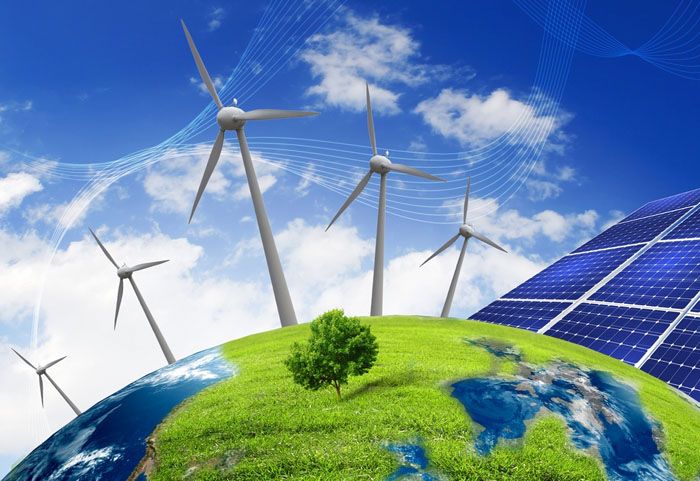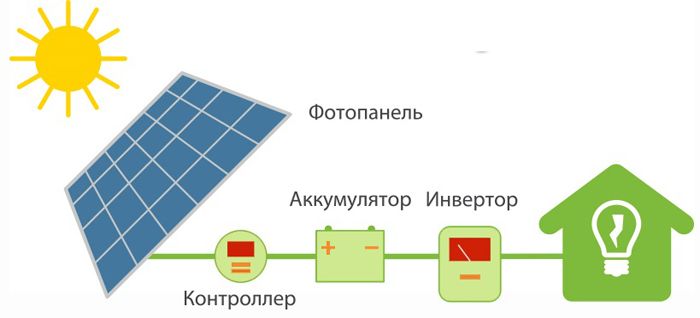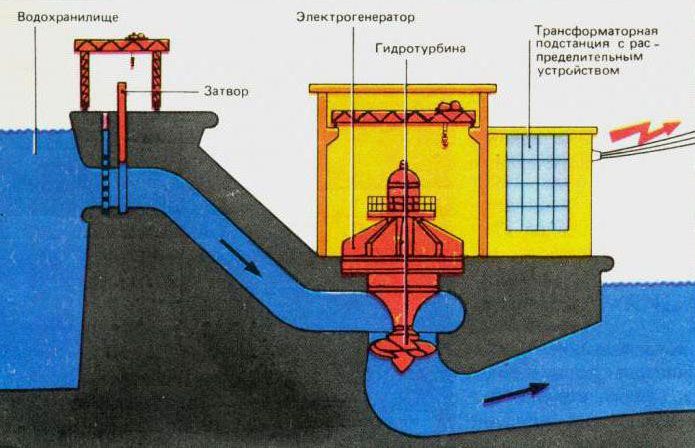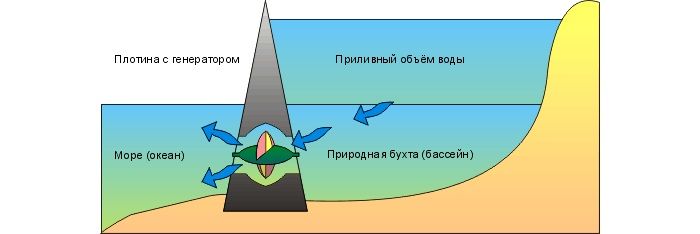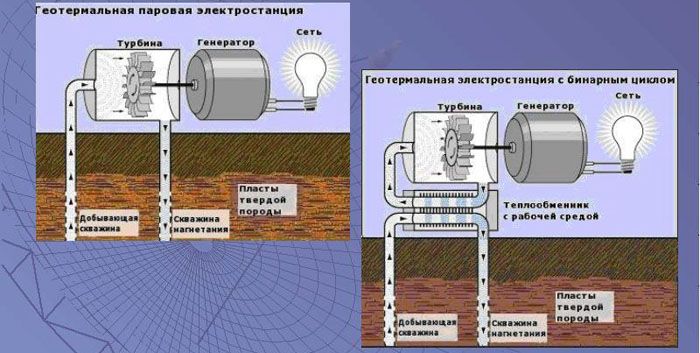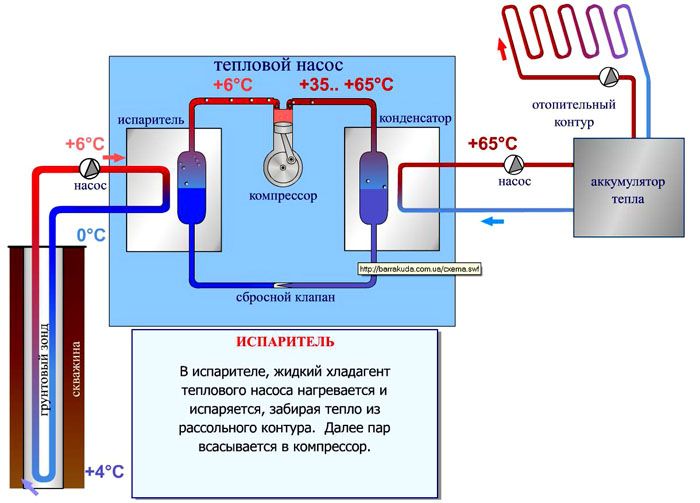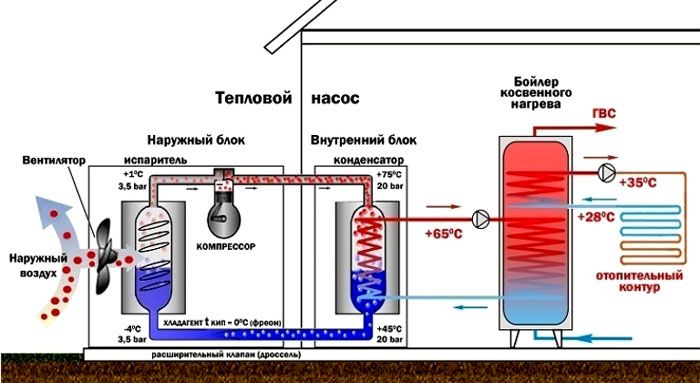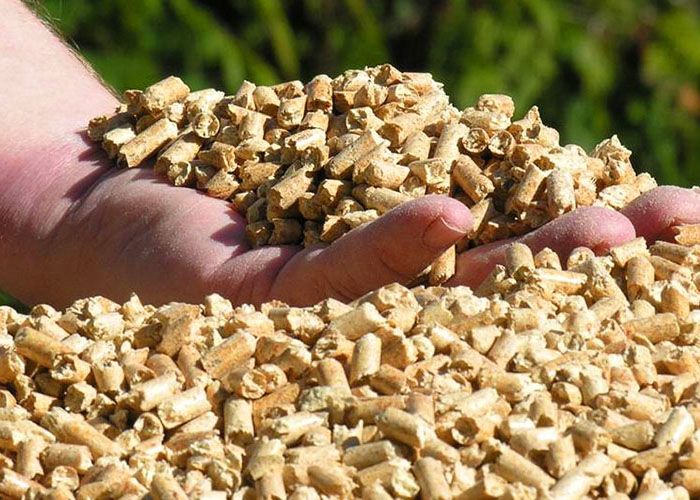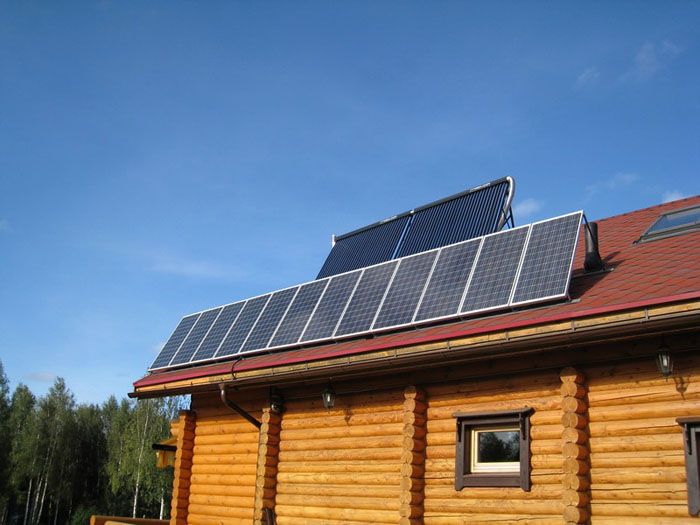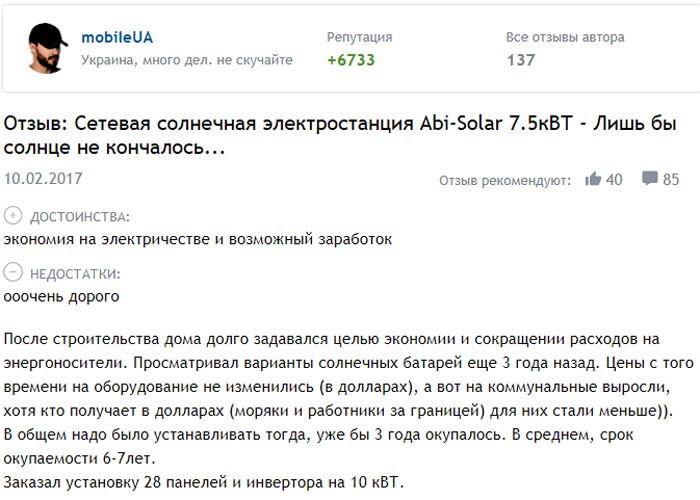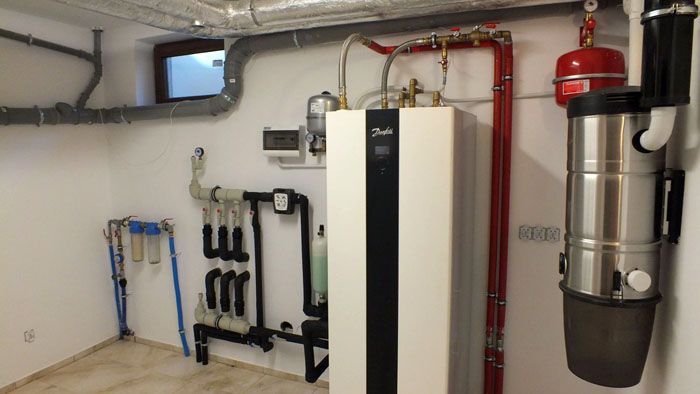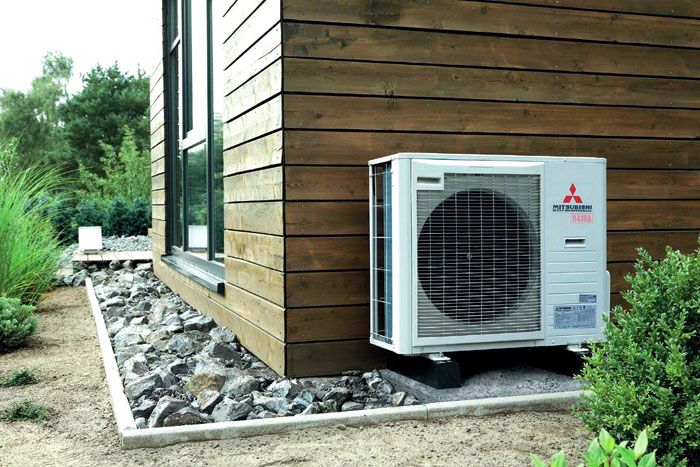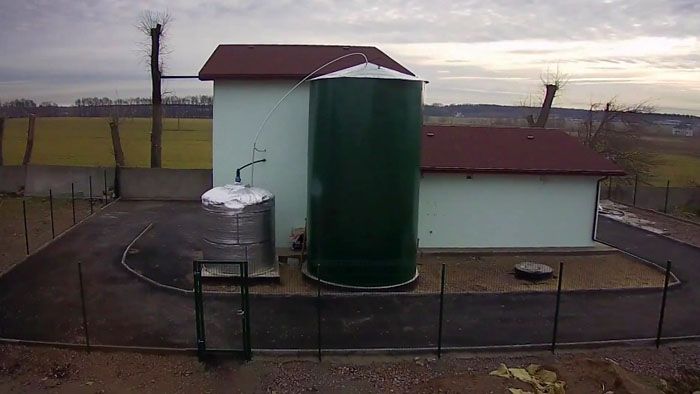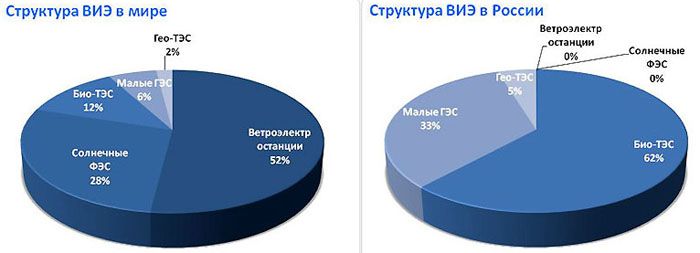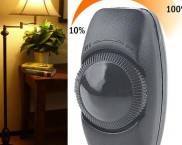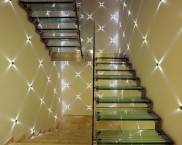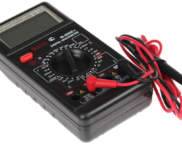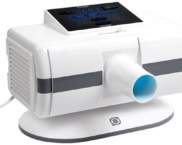What are alternative energy sources and how they can be used for personal purposes
In the modern rapidly developing world, the struggle for energy resources between developed countries is a priority of the foreign policy of many states, therefore, being energetically independent means being free economically and politically. In addition, almost in the first place among technically developed countries, there is the issue of the environmental safety of our planet, as evidenced by the Paris Climate Agreement of 2015 and a number of other international documents. In the context of these decisions, as well as in connection with the reduction of reserves of traditional energy sources (gas, oil, coal, etc.), many states are beginning to actively develop alternative, renewable energy sources. What are alternative energy sources, their types and methods of use, can you do it yourself - this is the topic of today's review.
The content of the article [Hide]
Alternative energy sources - what is it
To put it briefly, alternative energy sources are renewable, ecological resources, the transformation of which produces electrical and thermal energy used by humans for their own needs. Unconventional sources of electricity are the sun and water, wind and geothermal waters, heat - the earth and the sun.
Types of alternative energy sources
The development of green energy is due to the development of technologies that have made it possible to use renewable energy sources with greater efficiency, which should be discussed separately.
Solar energy
The sun is an inexhaustible source of energy that can provide heat and electricity to all the inhabitants of our planet, however, to convert this energy, it is necessary to have special technical devices.
To obtain electricity, a power plant is needed, the main element of which is solar battery (panel). The principle of operation of such a device (panel) is based on the conversion of solar radiation into electrical energy, which occurs when light hits the photocells of which it consists. Electric current is generated by creating a potential difference inside the photocell and is caused by physical processes associated with the "p-n" conductivity of silicon-containing materials. The principle of the solar battery is shown in the following figure.
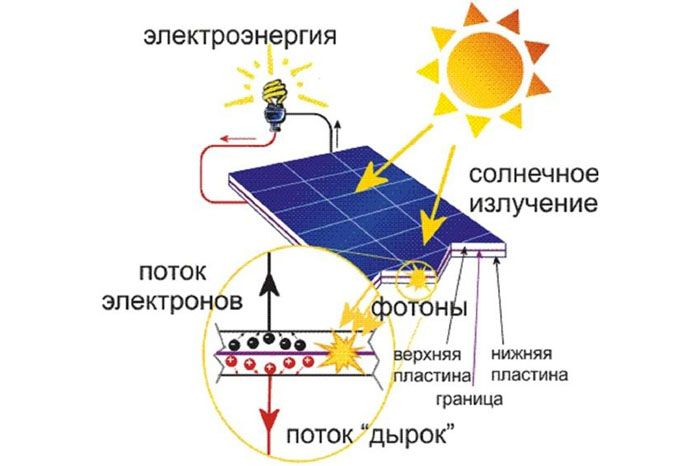
The multidirectional movement of electrons and holes caused by solar radiation creates a potential difference on the surface of the photocell
For the operation of such a power plant, except solar panel, a number of technical devices are required:
To obtain heat energy that can be used for heating and hot water supply, technical devices called solar collectors are required.
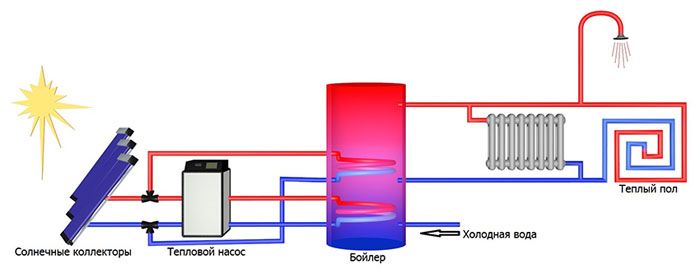
Scheme for connecting a solar collector to the heating and hot water supply system of a residential building
Such units are of two types: flat and vacuum. They differ in design, but they are similar in principle to each other. The function of such devices is to absorb the energy of the sun and convert it into thermal energy, which, in turn, is transferred to the heat carrier in the heating circuit or water that goes for hot water supply to consumers. For the operation of this system, you will also need a circulation pump and a storage tank (boiler), shut-off and control valves, as well as automation and control systems.
Wind energy
Wind can also serve as a source of obtaining electrical energy, and since it blows almost always and everywhere, which is due to the "breath" of our planet, then its reserves are inexhaustible.
Difficulties in obtaining electrical energy from the kinetic energy of the wind lie in its inconstancy, multidirectionality and different magnitudes of the strength of air flows. To obtain electricity using wind energy, you need a wind generator (wind power plant).
Carminers are of various types:
Different models differ in speed of rotation of blades (low speed and high speed) and drums, installation height and technical characteristics. For the operation of a wind turbine in the power supply system, a set of equipment is required, similar to that used with solar panels (controller, inverter).
Related article:
Energy of water
On the planet Earth, water occupies most of its surface - these are seas and oceans, lakes and rivers, artificial reservoirs and other reservoirs.
Man learned to use the energy of water long ago, and initially it was mechanical, obtained as a result of the movement of the aquatic environment.Its streams brought the millstones of a mill or other mechanical device into rotation, and a person only controlled the speed of their rotation. In the future, people began to use this type of energy to generate electrical energy, both on rivers with a fast flow, and in the seas - due to the ebb and flow, "functioning" with constant accuracy. To generate electrical energy, special turbines are used, which are placed in an aqueous medium, the shaft of which is connected to a generator that generates an electric current. The streams of water directed to the turbine blades rotate it, and this movement is transmitted to the generator, and, as a result, an electric current is generated.
In tidal stations, the work is carried out in a similar way, with the only difference that the water flows move in different directions, which is caused by the cyclicity of the periods "ebb-tide".
Energy of the earth
The energy of our planet is also used by man for his own needs, with its help you can heat a house or heat up water, as well as produce electrical energy.
In some regions of our planet, internal heat simply bursts out, which is expressed in seismic activity, volcanic eruptions and the presence of geysers. In such places, the issues of heating and hot water supply are solved quite simply and do not require a special description, and not everyone knows about generating electricity in this way.
To obtain electrical energy, a geothermal power plant is being built, in which a steam turbine is used as a source of energy, driven by steam, obtained or converted from the thermal energy of the earth.
The types and methods of steam conversion can be different, which is due to the depth of geothermal waters and their chemical characteristics, as well as thermal indicators.
A heat pump is a technical device that allows the use of heat from various natural sources for heating and hot water supply.
There are several types of such units, differing in the primary source of energy and the method of its transmission to the consumer: "air-water" and "air-air", "water-water" and "water-air", as well as "ground-water".
The operation of the water-to-water heat pump shown in the figure is as follows:
Related article:
Biofuels
Firewood is an all known type of biofuel, but due to the fact that forests are not available in all regions, and they must be used very carefully, they should not be considered in their pure form as an alternative and easily renewable fuel.
Alternative and renewable energy sources include the following types of biofuels:
Fuel briquettes and pellets are made on special equipment, and for their combustion are used solid fuel boilersequipped with special grates that ensure their combustion.
Liquid fuel is obtained at special enterprises by processing the original plant raw materials. Biogas is also produced by processing organic waste and can be used to generate electricity and heat. For this, the resulting gas is burned, and the resulting heat is consumed for heat supply and hot water supply, as well as for generating steam, which ensures the operation of a special turbine that generates an electric current.
Alternative energy sources for a private house
Almost all of the above sources of alternative energy can be used for a private house or other structure, the only exception can be the production of liquid biofuel, which is due to the high cost of equipment required for its production. Installations of alternative energy sources used for personal consumption may look different, below are examples of already implemented projects of renewable energy installations:
Solar power plants are produced in our country and many technically developed countries of the world. Different models differ in technical characteristics, service life and cost, and therefore, it is always possible to choose a station in accordance with the need and financial capabilities. Here are some of the options that have been successfully implemented in the domestic market.
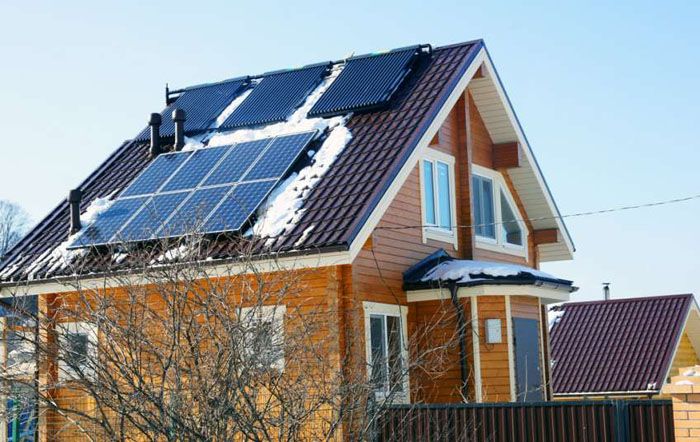
Solar panels and collectors can be placed side by side, thereby providing yourself with heat and electricity
Solar collectors are also used in our country for heating and hot water supply to houses, but this trend is most developed in the southern regions, where the climate allows you to use such installations almost all year round.
Here are some of these uses.
Wind generators are less common among ordinary consumers than solar power plants, the reason for this is the low wind load in the most populated regions of our country. Nevertheless, on the Internet you can find photographs and testimonials about the successful use of such installations.
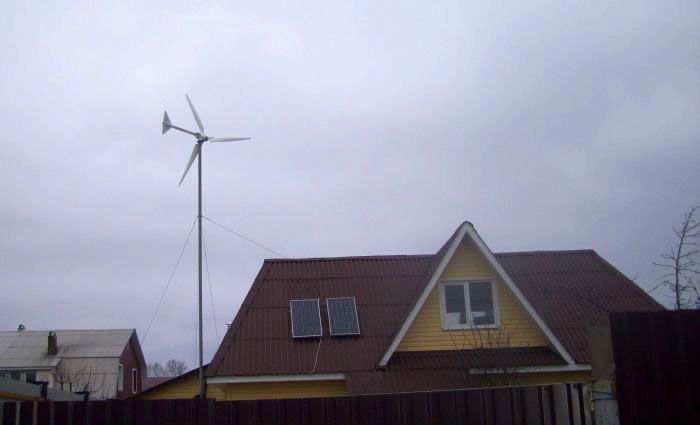
A windmill can be a good addition to a solar station, since the operating parameters and the set of necessary equipment are almost identical.
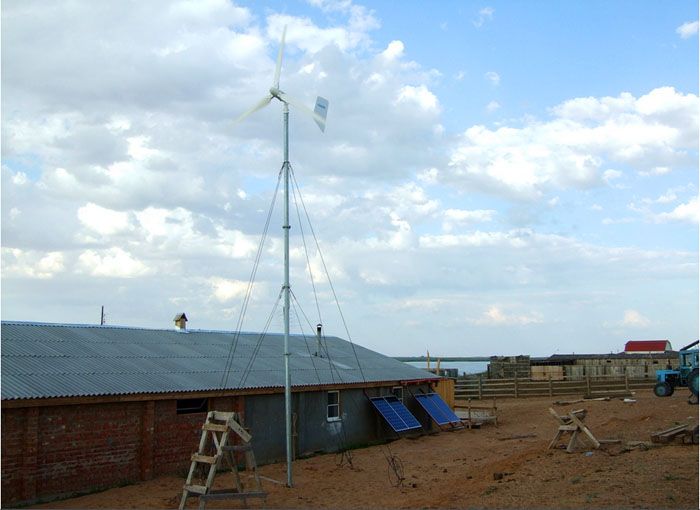
In places where there is no centralized power supply, the wind generator and solar station become the main source of electrical energy.
Few people are familiar with this type of equipment, but gradually, due to the decrease in the cost of heat pumps, they are slowly conquering the market of alternative energy sources. Here are some of the successfully completed projects.
Biogas production can be done by having a country house, but at the same time you should remember about observing the temperature regime during its production and the unpleasant odor formed during the fermentation of biomass. Such installations can be afforded by residents of the southern regions engaged in agriculture, because it is crop waste that serves as a raw material for the production of this type of alternative fuel.
Is there a future for alternative energy sources
Whether there is a future for alternative energy sources is a question of interest to many power engineers, ecologists and just active citizens of our country, and the answer is unequivocal - YES, there is a future. In our country, in 2009, a program for the development of alternative energy in Russia was adopted and is being successfully implemented, formulated as "The main directions of state policy in the field of improving the energy efficiency of the electric power industry based on the use of renewable energy sources for the period until 2020". In addition, the state provides assistance to enterprises in the implementation of the International Finance Corporation (IFC) program for the development of renewable energy sources. At the legislative level, economic levers are created to promote the spread of "green" energy, expressed in the establishment of preferential tariffs and financial assistance for construction, tax incentives and compensation for part of the credit costs of construction.
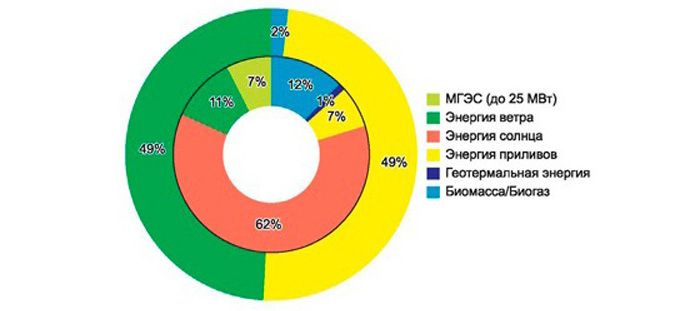
Development of the alternative energy market in Russia by installed capacity (inner circle - 2009 / outer circle - 2020)
One example of such assistance is the introduction of the so-called “green tariff” for electricity. Its essence lies in the fact that the values of this tariff are higher than those of power supply organizations, thus, the state stimulates the development of alternative energy in a specific territory. The tariff allows individual users and enterprises with alternative power plants to partially compensate for the costs of their purchase and installation by selling surplus generated electricity to the external network at higher prices. At present, the Russian government has approved the Rules for such implementation and prepared draft Resolutions defining the conditions for the provision of the “green tariff”. The law, according to which such activities will be carried out, is being developed by the Ministry of Energy, the Ministry of Economic Development and the Federal Antimonopoly Service and should be submitted for consideration to the State Duma in 2018.
Do-it-yourself alternative energy for home
If you have free time, desire, and also the ability to work with a hand tool, you can create installations with which to use alternative sources for your needs, both in the form of electrical and thermal energy.
This applies to all of the above types of alternative energy:
Video: alternative energy for a private house




